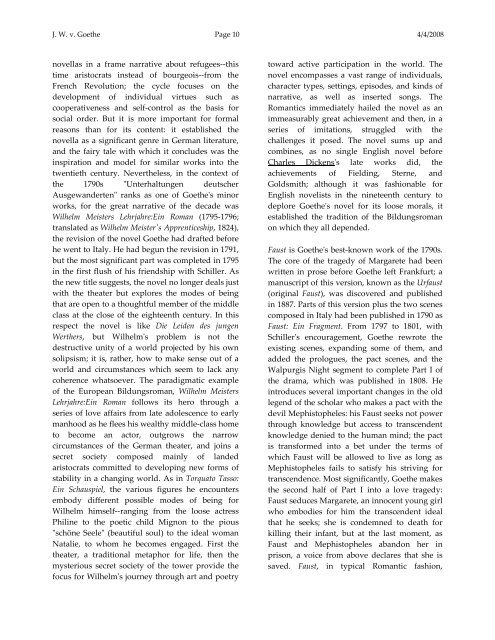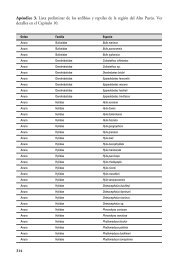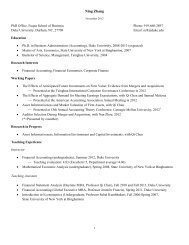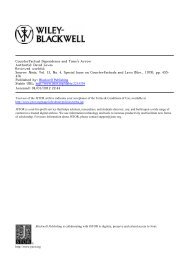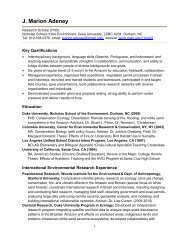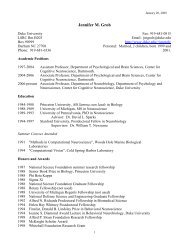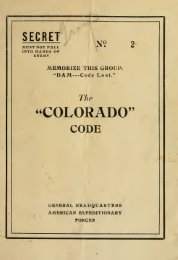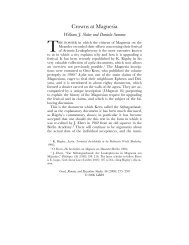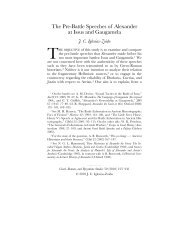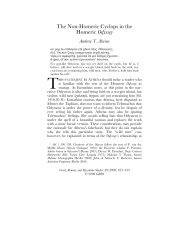Johann Wolfgang von Goethe (1749-1832) - Duke University
Johann Wolfgang von Goethe (1749-1832) - Duke University
Johann Wolfgang von Goethe (1749-1832) - Duke University
Create successful ePaper yourself
Turn your PDF publications into a flip-book with our unique Google optimized e-Paper software.
J. W. v. <strong>Goethe</strong> Page 10 4/4/2008<br />
novellas in a frame narrative about refugees--this<br />
time aristocrats instead of bourgeois--from the<br />
French Revolution; the cycle focuses on the<br />
development of individual virtues such as<br />
cooperativeness and self-control as the basis for<br />
social order. But it is more important for formal<br />
reasons than for its content: it established the<br />
novella as a significant genre in German literature,<br />
and the fairy tale with which it concludes was the<br />
inspiration and model for similar works into the<br />
twentieth century. Nevertheless, in the context of<br />
the 1790s "Unterhaltungen deutscher<br />
Ausgewanderten" ranks as one of <strong>Goethe</strong>'s minor<br />
works, for the great narrative of the decade was<br />
Wilhelm Meisters Lehrjahre:Ein Roman (1795-1796;<br />
translated as Wilhelm Meister's Apprenticeship, 1824),<br />
the revision of the novel <strong>Goethe</strong> had drafted before<br />
he went to Italy. He had begun the revision in 1791,<br />
but the most significant part was completed in 1795<br />
in the first flush of his friendship with Schiller. As<br />
the new title suggests, the novel no longer deals just<br />
with the theater but explores the modes of being<br />
that are open to a thoughtful member of the middle<br />
class at the close of the eighteenth century. In this<br />
respect the novel is like Die Leiden des jungen<br />
Werthers, but Wilhelm's problem is not the<br />
destructive unity of a world projected by his own<br />
solipsism; it is, rather, how to make sense out of a<br />
world and circumstances which seem to lack any<br />
coherence whatsoever. The paradigmatic example<br />
of the European Bildungsroman, Wilhelm Meisters<br />
Lehrjahre:Ein Roman follows its hero through a<br />
series of love affairs from late adolescence to early<br />
manhood as he flees his wealthy middle-class home<br />
to become an actor, outgrows the narrow<br />
circumstances of the German theater, and joins a<br />
secret society composed mainly of landed<br />
aristocrats committed to developing new forms of<br />
stability in a changing world. As in Torquato Tasso:<br />
Ein Schauspiel, the various figures he encounters<br />
embody different possible modes of being for<br />
Wilhelm himself--ranging from the loose actress<br />
Philine to the poetic child Mignon to the pious<br />
"schöne Seele" (beautiful soul) to the ideal woman<br />
Natalie, to whom he becomes engaged. First the<br />
theater, a traditional metaphor for life, then the<br />
mysterious secret society of the tower provide the<br />
focus for Wilhelm's journey through art and poetry<br />
toward active participation in the world. The<br />
novel encompasses a vast range of individuals,<br />
character types, settings, episodes, and kinds of<br />
narrative, as well as inserted songs. The<br />
Romantics immediately hailed the novel as an<br />
immeasurably great achievement and then, in a<br />
series of imitations, struggled with the<br />
challenges it posed. The novel sums up and<br />
combines, as no single English novel before<br />
Charles Dickens's late works did, the<br />
achievements of Fielding, Sterne, and<br />
Goldsmith; although it was fashionable for<br />
English novelists in the nineteenth century to<br />
deplore <strong>Goethe</strong>'s novel for its loose morals, it<br />
established the tradition of the Bildungsroman<br />
on which they all depended.<br />
Faust is <strong>Goethe</strong>'s best-known work of the 1790s.<br />
The core of the tragedy of Margarete had been<br />
written in prose before <strong>Goethe</strong> left Frankfurt; a<br />
manuscript of this version, known as the Urfaust<br />
(original Faust), was discovered and published<br />
in 1887. Parts of this version plus the two scenes<br />
composed in Italy had been published in 1790 as<br />
Faust: Ein Fragment. From 1797 to 1801, with<br />
Schiller's encouragement, <strong>Goethe</strong> rewrote the<br />
existing scenes, expanding some of them, and<br />
added the prologues, the pact scenes, and the<br />
Walpurgis Night segment to complete Part I of<br />
the drama, which was published in 1808. He<br />
introduces several important changes in the old<br />
legend of the scholar who makes a pact with the<br />
devil Mephistopheles: his Faust seeks not power<br />
through knowledge but access to transcendent<br />
knowledge denied to the human mind; the pact<br />
is transformed into a bet under the terms of<br />
which Faust will be allowed to live as long as<br />
Mephistopheles fails to satisfy his striving for<br />
transcendence. Most significantly, <strong>Goethe</strong> makes<br />
the second half of Part I into a love tragedy:<br />
Faust seduces Margarete, an innocent young girl<br />
who embodies for him the transcendent ideal<br />
that he seeks; she is condemned to death for<br />
killing their infant, but at the last moment, as<br />
Faust and Mephistopheles abandon her in<br />
prison, a voice from above declares that she is<br />
saved. Faust, in typical Romantic fashion,


